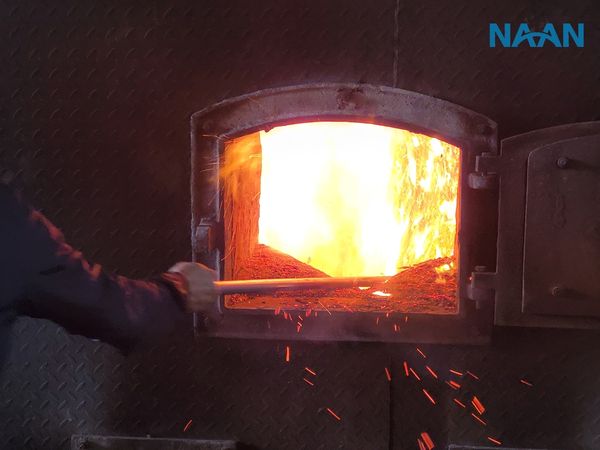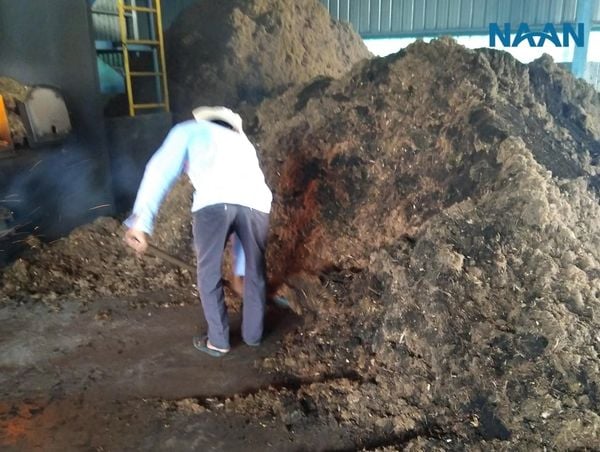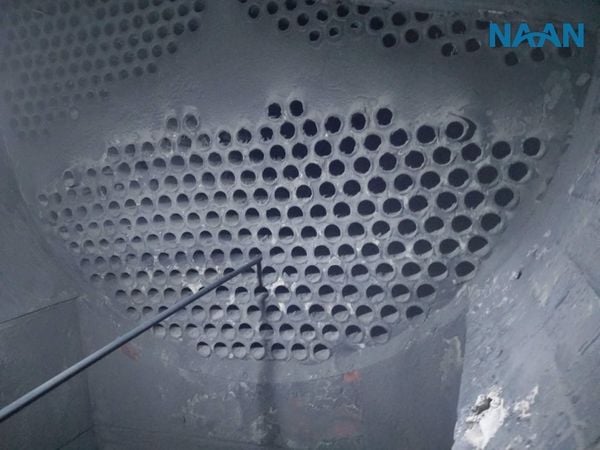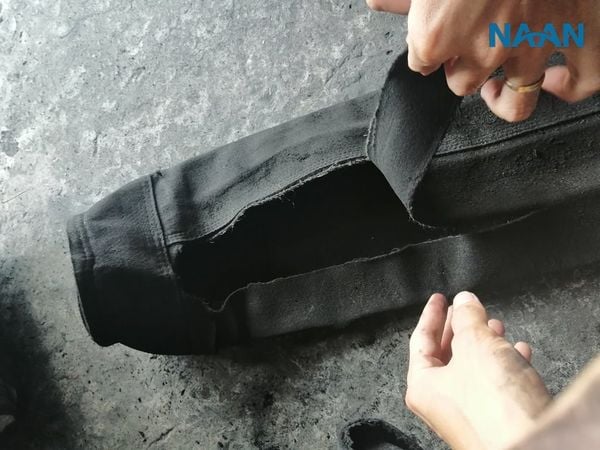Solving the Furnace Problem of a Fluidized Bed Boiler
I. What is Positive Pressure in the Boiler?

Positive pressure leaking outside the operation door
Positive pressure in the boiler is the phenomenon where the amount of air pushed into the combustion chamber exceeds the amount of air drawn out of the chamber, causing the fire to leak outside the boiler through the operation doors. This poses safety hazards to operators and compromises the cleanliness of the operational area. Specifically for boiling layer boilers and industrial boilers in general, to ensure occupational safety, the pressure in the combustion chamber must always be lower than atmospheric pressure, a condition known as negative pressure or vacuum pressure.
II. Causes of Positive Pressure Phenomenon in Boilers
Incorrect Operation Procedures: In cases where increasing power is necessary to intensify the combustion process in the combustion chamber, we need to increase the speed of the blowers to supply more oxygen into the chamber, corresponding to the increased amount of fuel supplied to the boiler. However, abruptly increasing the blowers can lead to positive pressure phenomenon due to the inability of the suction fan to respond promptly. Therefore, before increasing the blowers, it is necessary to increase the suction fan first. Conversely, when reducing power, the blowers should be reduced first, followed by the suction fan. The principle of increasing suction and reducing blowing will address the issue of positive pressure during operation.
High Moisture Content in Fuel: Positive pressure phenomenon tends to occur more frequently with high moisture content fuel. This can be explained by the fact that high moisture content fuel is difficult to ignite immediately; the fuel needs to expel all moisture before ignition can occur. The more moisture the fuel retains, the easier it will burn when dry. Therefore, a large amount of fuel in the combustion chamber will ignite and release gas, which the suction fan cannot cope with in time, resulting in positive pressure phenomenon.

High moisture content fuel causes numerous issues for the boilerDeposition of Soot on Smoke Channels: During long-term operation, soot can accumulate inside the fire tubes, heat exchange tubes of air heaters, or water heating coils. Reduced smoke channel cross-sections lead to increased resistance for smoke discharge. Regular cleaning and maintenance of the boiler are necessary to ensure stable steam production.

Soot deposition inside the fire tubes causes smoke channel blockageClogging of Fabric Bags: For boilers equipped with fabric bags, dust can accumulate outside the bags after a short period, increasing dust filtration efficiency but significantly reducing the suction pressure of the suction fan. Therefore, fabric bag dust filter systems are always equipped with periodic dust cleaning and bag rejuvenation systems. Malfunctions in the rejuvenation system may cause positive pressure phenomenon.

Fabric bag torn due to operation in high moisture environmentsLow Design of Operation Doors: It is well known that blowers for boiling layer boilers are high-pressure fans. The pressure from the boiler blower is enough to lift the entire mass of fuel above the marking surface, causing the fuel to enter a boiling state (hence the name boiling layer). However, for the sake of convenience in operation and installation, some manufacturers have positioned the operation doors too close to the marking surface, leading to positive pressure phenomenon.

Operation door positioned too close to the marking surface
Conclusion
Positive pressure phenomenon in boiling layer boilers can cause various issues, from endangering operators to increasing fuel costs. However, by understanding the causes of this phenomenon and applying appropriate corrective measures, we can ensure the safe and efficient operation of the boiler. It is hoped that the information in this article will assist you in operating and maintaining your boiler.





